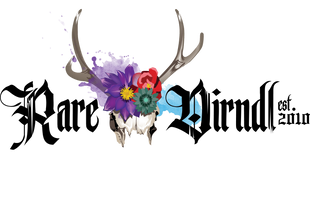Germany & Rare Dirndl's Carbon Neutral Plan
Did you know that Germany has set a goal to become greenhouse gas neutral by 2045? They passed their first climate law in 2019 and amended it in 2021. Their initial plan is to cut emissions by around 65% by 2030 and 88% by 2040.
Germany is one of only a few countries that have publicly stated and set national laws on their goal of climate neutrality by or below 2050.

So what does that mean?
First, let's define what being Carbon Neutral is. Carbon Neutral means that there's a balance between the carbon emitted into the atmosphere and the carbon absorbed from the atmosphere. With carbon neutrality, you want to remove carbon from the atmosphere and store it. This is known as carbon sequestration.
The goal is to absorb carbon into what's known as a "carbon sink." A carbon sink is a system that absorbs more carbon than it emits.
While we do have natural carbon sinks like gardens, forests, and oceans, we need to be careful. Natural sinks release carbon into the atmosphere when there are changes in land use - like logging, building, forest fires, etc. This is why it's so important to reduce our carbon emissions.
Germany is known for its diverse terrains that act as carbon sinks. It's full of mountains and river valleys with various plant and flower life native to the country, which is great in accomplishing its carbon neutrality goals.
Here are common plants and herbs that cover Germany's landscape to help in their efforts to be carbon neutral by 2045.
Cornflower

First, we have cornflowers. This is the national flower of Germany but has been naturalized all through North America.
They grow 2 to 3 feet tall and grow various colors of pastel flowers.
Cornflowers are great for carbon neutrality because they're easily adaptable, can grow in poor soils, are drought-tolerant, and grow annually.
They're a minimal effort plant that can thrive in most carbon sinks and continue to grow yearly.
European Spindle

Next is the European spindle. This native German plant has taken over the United States.
Like the cornflower, the European Spindle is an annual plant that grows small yellowy-green flowers. In the Fall, the leaves will turn yellow or a reddish-purple. They're absolutely beautiful all year round!
These plants thrive in various soils and grow quickly in shady or sunny environments.
German Chamomile

Chamomile is probably one of the more well-known plants on this list. It's known for its calming effects. Also, if you didn't know, chamomile is known to improve skin conditions like acne or eczema and heal colds and sore throats.
Chamomile is an annual herb that looks similar to daisies. They have a yellow center with white petals and grow on thin, bright stems.
These plants thrive in sunlight and can tolerate poor soils.
The Cornflower, European Spindle, and German Chamomile are native to Germany. They're low maintenance and grow annually. As a result, these plants are very common in Germany's carbon sinks and help absorb their carbon emissions.
If you’re interested in learning more about all the beautiful plants in Germany, we wrote a blog about some of the most popular herbs and flowers.

I wanted to make sure that Rare Dirndl contributed what it could to reduce our carbon footprint, so I started using Eco Cart. EcoCart is a chrome extension that calculates and offsets the carbon footprint of your order by donating the required amount to reduce those emissions directly to projects focused on Carbon Neutrality. Some of these projects are focused on forest protection, water purification, and much more! Check out the EcoCarts list of projects here.
We only have one world, and our use of carbon is damaging to it. Rare Dirndl is working towards balancing our carbon footprint by using Eco Cart, but there are plenty of other ways. Whether you start growing carbon-absorbing plants, donating to organizations, or implementing Eco Cart in your businesses, everyone can make a difference!

